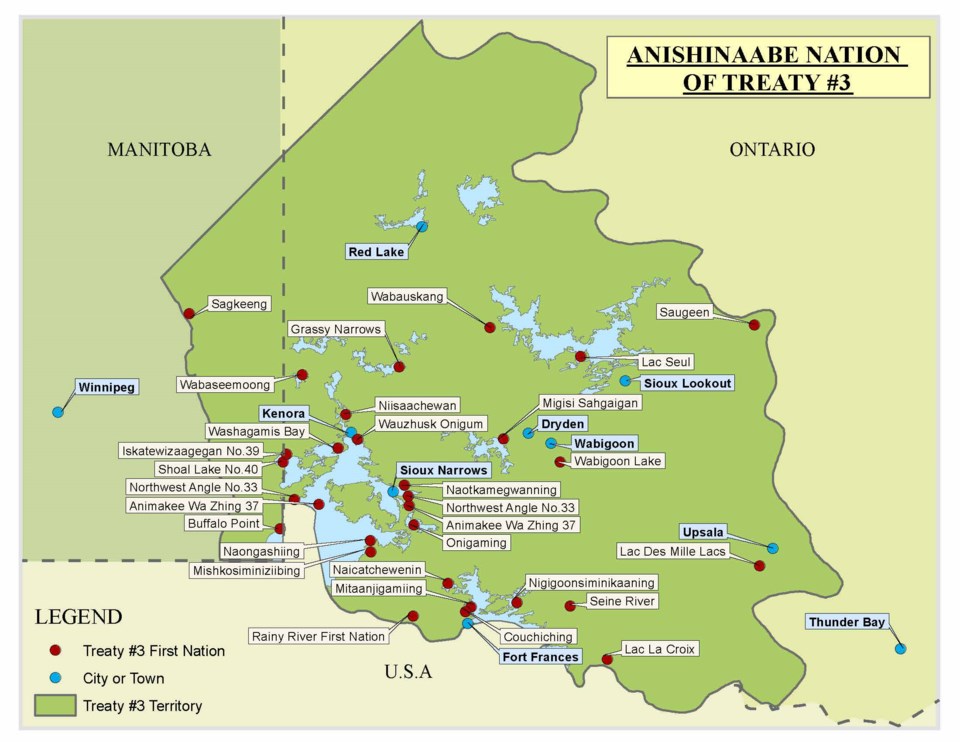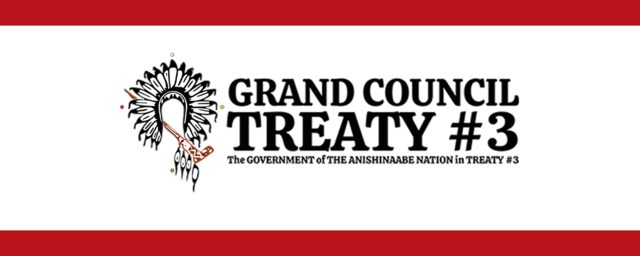Manito Aki Inakonigaawin.
Grand Council Treaty #3, as the governing body of the Anishinaabe Nation in Treaty #3, clearly maintains rights to all lands and water in the Treaty #3 territory.
In exercising its authority, the Grand Council expresses concern with proponents who carry out business activities that may result in destruction to the environment or interfere with the traditional activities of individual or collective members of the Anishinaabe Nation in Treaty # 3.
WE ARE STEWARDS OF THE LAND
Grand Council Treaty #3’s overall goal is the protection, preservation and enhancement of Treaty and Aboriginal rights.
The Grand Council Treaty #3 existed in the territory of the Anishinaabe Nation, key to Canadian Confederation in that the British wanted to plan a route between Fort Garry and Fort William (now Winnipeg, MB and Thunder Bay, ON respectively).
Grand Council Treaty #3 was planned to be the first post-Confederation treaty, but the Anishinaabe held firm that they would not cede lands, nor allow farming or settlement, in their territory. On October 3, 1873, the 55,000 square miles of territory agreed to be shared between the Anishinaabe and the British.
The Chiefs negotiated, among other things, that British “business” would be allowed within the entire territory, and that both the land and resources would be shared between Anishinaabe and the British as “brothers.”
Grand Council Treaty #3 is 55,000 sq. miles spanning from west of Thunder Bay to north of Sioux Lookout, along the international border, to the province of Manitoba.
It is made up of 28 First Nation communities, with a total population of approximately 25,000.
Communities
- Animakee Wa Zhing 37 First Nation
- Asubpeeschoseewagong First Nation (Grassy Narrows)
- Buffalo Point First Nation
- Couchiching First Nation
- Iskatewizaagegan 39 Independent First Nation
- Lac des Mille Lacs First Nation
- Lac La Croix First Nation
- Lac Seul First Nation (Obishikokaang)
- Migisi Sahgaigan First Nation (Eagle Lake)
- Mishkosiminiziibiing First Nation (Big Grassy River)
- Mitaanjigamiing First Nation
- Naicatchewenin First Nation (Northwest Bay)
- Naongashiing First Nation (Big Island)
- Naotkamegwanning First Nation (Whitefish Bay)
- Nigigoonsiminikaaning First Nation (Red Gut)
- Niisaachewan Anishinaabe Nation (Dalles)
- Northwest Angle 33 First Nation
- Ojibways of Onigaming First Nation (Sabaskong)
- Rainy River First Nations (Manitou Rapids)
- Sagkeeng First Nation
- Ojibway Nation of Saugeen
- Seine River First Nation
- Shoal Lake 40 First Nation
- Waabigonii Zaaga’igan (Wabigoon Lake Ojibway Nation)
- Wabaseemoong Independent Nations (Whitedog)
- Wabauskang First Nation
- Washagamis Bay First Nation
- Wauzhushk Onigum Nation (Rat Portage)


